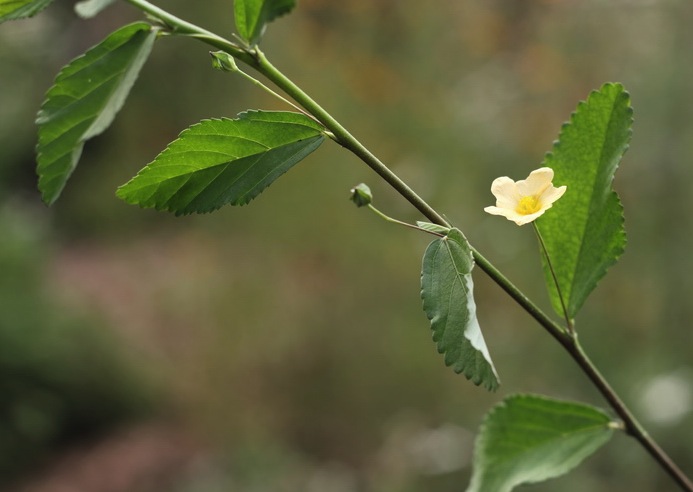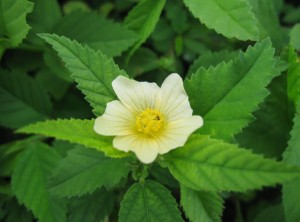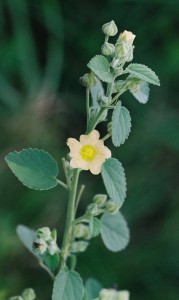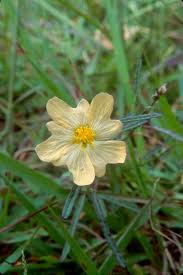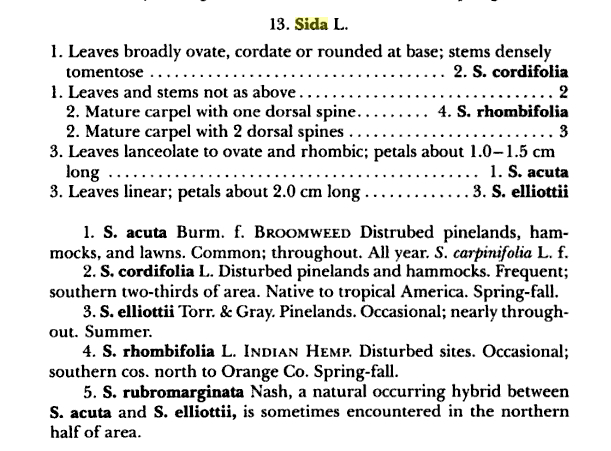Sida is barely edible. A member of the Mallow mob it’s an object de interest because it is also a significant herbal medication, of which I am totally unqualified to write about: So here goes…
There are at least twelve Sida regionally, some say eight because four of them are rare. It’s called wireweed because if you’ve ever tried to pull one out of the ground it’s a strong as any left over fence and why it is also used for cordage. Two Sida should be mentioned: Sida acuta and Sida rhombifolia. Dr. Daniel Austin, author of Florida Ethnobotany, says on page 53 of S. acuta: “Branches are made into brooms; smoked as a stimulant and adulterant for marijuana, leaves contain ephedrine.” For S. rhombifolia (Indian Hemp, Indian Tea, Cuban Jute, Queensland Hemp) he writes: Same use as S. acuta.
Cornucopia II fortunately comes to the forager’s rescue. On page 148 in reference to S. rhombifolia it says: “The leaves are used as a tea substitute in some parts of the Canary Island and Mexico. As a leafy vegetable they contain about 7.4% protein.” There is no mention of S. acuta in Cornucopia II. I know someone who ate 10 Sida leaves raw and didn’t experience anything. Then again he’s a young man who drinks a lot of coffee so the effect of the ephedrine might get lost.
It is because of the ephedrine that the species come with many warnings. Ephedrine is used to dilate asthmatic lungs, and can drive up your heart rate and blood pressure. In Florida, for example, ephedrine is a prescription drug. However over the counter preparations for medicinal uses can be sold if they have no more than 5 milligrams per dose. In Florida it is illegal to give ephedrine in pill form to anyone under the age of 18. The statue also specifically mentions Sida cordifolia, as if it is the main culprit. Pill form seems to be the only illegal delivery method and then only to those under 18. The fine is small, $100 first offense, $1000 fourth offense.
While ephedrine can be used by asthmatics it can have side effects. Preparations say don’t use if: You have high blood pressure, heart disease, an irregular heartbeat, thyroid disease, diabetes, or difficulty in urination due to enlargement of the prostate gland or other severe heart problems. It should also be avoided if you are taking a MAO inhibitor. Ephedrine and pseudoephedrine are closely related drugs and similar to the hormone epinephrine. When I did a lot of diving and snorkeling I used to take a half a dose of Sudafed to keep my sinuses clear underwater. While such preparations in low-doses are not prescription they are controlled and have to be handed over from the pharmacist personally. The chemical is used to make illegal stimulants so tabs are kept on how much is purchased.
The Sida genus is fairly easy to identify, having yellow/salmon pinwheel blossoms that open around solar noon. Individual species is a bit more challenging. The two telling elements between the two here is this: S. rhombifolia has long stems on the flowers and the half of the leaf (closer to the main stem) do not have teeth. S. acuta blossoms have very short stems and the leaf margin is nearly all teeth.
S. rhombifolia is erect to sprawling, branched, growing 20 inches to four feet (50 to 120 centimeters) tall, lower sections woody, dark green, diamond-shaped leaves arranged alternately along the stem, 2 to 4 inches long (4 to 8 centimeters) with petioles less than a third of the length of the leaves. Leaves pale underneath, with short, grayish hairs, outer half of leaf toothed, inner half not toothed. Petioles have small spiny stipules. Flowers on long stalks, five yellow/salmon petals, overlap to create a pinwheel effect. Blooms throughout the year, usually around noon. Found in waste ground, along roadsides and in pastures as livestock don’t like it but deer do. Found in the southern half of the United States and is pan-tropical.
Sida acuta erect to three feet, stems woody, branching several times, well-developed tap root. Leaves lance- to diamond-shaped with serrated margins. Small yellow flowers on short stems. Ranges from South Carolina throughout Florida and west into Mississippi, late spring until frost. Grows in dense stands along highways, agricultural land, edges of woods.
Sida (SEE-duh) was a Greek word used for a particular water lily. Now it is used for this genus. Rhombifolia (rom-bif-OH-lee-uh) means diamond shaped. Acuta (a-KEW-ta) means sharpened to a point, in reference to the tip of the leaves.
Method of preparation is as Cornucopia II said above: “The leaves are used as a tea substitute in some parts of the Canary Island and Mexico. As a leafy vegetable they contain about 7.4% protein.”
Medicinal or other uses are beyond my experience to comment on as ephedrine and I are no longer compatible.

